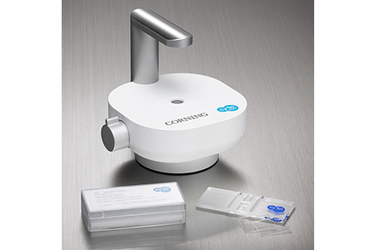Counting Peripheral Blood Mononuclear Cells Using The Corning® Cell Counter
By Jeff Partridge, Corning Incorporated, Life Sciences

About Peripheral Blood Mononuclear Cells (PBMCs)
Whole blood is collected from a donor and PBMCs are separated and saved while the remaining blood cells and components are returned to the body (apheresis)1. This process yields large amounts of PBMC which are suitable for further experimentation or study.
Counting of PBMCs
PMBCs are smaller in size than many mammalian cell types, and depending on the sample, may contain erythrocyte (red blood cell, RBC) contamination. It is recommended that RBCs are removed by centrifugal separation or lysis prior to counting with the Corning Cell Counter.
PMBCs are often counted using time-consuming manual methods such as a hemocytometer. While the hemocytometer has been considered the gold standard for cell counting since the 18th century2, results are frequently subjective, variable, and small differences in cell diameters cannot easily or reproducibly be discerned.
The Corning Cell Counter offers an alternative method to quickly and accurately count these cells. The counting algorithm was developed to identify and remove debris and account for dead cells, while the functionality of the application allows for the population to be gated to remove larger cells and debris from the final count.
Get unlimited access to:
Enter your credentials below to log in. Not yet a member of Cell & Gene? Subscribe today.
